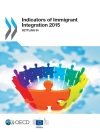Cross-Cultural Management: An Introduction offers students a hands-on approach to cross-cultural management that they can apply to a wide variety of organizational contexts. Rather than focusing on specific countries, authors David C. Thomas and Kerr Inkson highlight the interactions of people from different cultures in organizational settings to provide students with practical applications of concepts in international management. Real-world examples and case studies help students understand and integrate differences between attitudes, values, beliefs, and assumptions so that they can thrive as managers.
विषयसूची
List of Tables and Figures
Preface
Acknowledgments
Chapter 1 • The International Manager
Learning Objectives
Opening Vignette: Ganbei and No Deal
Introduction
Globalization
The Contexts of International Management
Chapter 2 • Describing Culture
Learning Objectives
Opening Vignette: Participate, and That′s an Order!
Introduction
Features of Culture
Defining Culture
Why Cultures Differ and Persist
Debates Surrounding the Concept of Culture
Culture and Social Groups
Chapter 3 • Comparing Cultures
Learning Objectives
Opening Vignette: What’s Your Social Credit Score?
Introduction
Kluckhohn and Strodtbeck Framework
Hofstede’s Study
Schwartz Value Survey
Trompenaars’s Dimensions
The GLOBE Study
Individualism and Collectivism
Social Axioms
Culture as a Source of Guidance
Cultural Distance
Limitations of Country Culture Research
Use of the Frameworks
Chapter 4 • How Culture Works
Learning Objectives
Opening Vignette: A Laid-Back Meeting
Introduction
Social Cognition
Cultural Schemas
Cultural Scripts and Norms
Selective Perception
Perceived Similarity and Attraction
Stereotypic Expectations
Differential Attributions
Cross-Cultural Interaction Model
Self-Schemas and Motivation
Chapter 5 • Cross-Cultural Decision Making
Learning Objectives
Opening Vignette: The Night Manager
Introduction
Rational Decision Making
Cultural Differences in the Optimization Model
Limits to Rationality
Decision Styles
Heuristics
Motivational Biases in Decision Making
Selection and Reward Allocation Decisions
Ethical Dilemmas in Decision Making
Chapter 6 • Communicating and Negotiating Across Cultures
Learning Objectives
Opening Vignette: You Must Do Better Next Year!
Introduction
Cross-Cultural Communication Process
Language
Communication Styles
Other Language Considerations
Other Language Considerations
Negotiation and Conflict Resolution Across Cultures
Chapter 7 • Motivation and Leadership Across Cultures
Learning Objectives
Opening Vignette: India Is Not Indiana
Introduction
Motivation Across Cultures
Motivation
Leadership
Western Leadership Theory
Servant Leadership
Non-Western Theories of Leadership
Integrated Cross-Cultural Model of Leadership
Conclusions About Leadership Across Cultures
Chapter 8 • Multicultural Work Groups and Teams
Learning Objectives
Opening Vignette: Multicultural Goal Scoring
Introduction
Work Groups
Work Group Effectiveness
The Influence of Culture on Work Groups
Culture’s Effects in Different Group Types and Tasks
Global Virtual Teams
Organizational Context and Culturally Diverse Work Groups
Chapter 9 • Culture and the Structure of International Organizations
Learning Objectives
Opening Vignette: A Marriage Made in Heaven
Introduction
Organizations
Organizational Design
Culture and Organizational Structure
Informal Organization
Organizing in Multinational Organizations
Chapter 10 • International Assignments
Learning Objectives
Opening Vignette: Kevin Mc Donald, Fly-In Trouble Shooter
Introduction
The Role of Expatriates
Individual Staffing Decisions
Definitions of Expatriate Success
Adjustment–Performance Relationship
Factors Affecting Expatriate Success
Repatriation
Outcomes of Foreign Assignments and Global Careers
Chapter 11 • Managing Across Cultures Into the Future
Learning Objectives
Opening Vignette: Bring on the Bots
Introduction
The Dynamic Environment of Business
The Adaptation of Organizations and People
The Development of International Managers
Post-Script: Cross-Cultural Management After COVID-19
How Much has the World Changed?
COVID-19 and Management
Responding to COVID-19: Cultural Effects
Conclusion: A Revised Future?
Glossary
Notes
Author Index
Subject Index
About the Authors
लेखक के बारे में
Kerr Inkson (Ph D University of Otago, New Zealand) is an Emeritus Professor in the University of Auckland Business School, New Zealand. His 55-year academic career included 32 years as full Professor, at five New Zealand universities. He has expertise in management, organizational behavior and career development, and his careers research includes work on new forms of career, the use of metaphor in career theory and practice, and international careers. He was first author of a paper “Expatriate assignment versus overseas experience: contrasting models of human resource development” which was awarded Best International Paper by the Academy of Management in 1997. He is a former Chair of the Careers Division, Academy of Management. Kerr has been the author or co-author of 18 books, over 50 book chapters and 75 refereed journal articles. His journal credits include Administrative Science Quarterly, British Journal of Management, Human Relations, Journal of Applied Psychology, Journal of Management Studies, Journal of Organizational Behavior, Journal of Vocational Behavior, Journal of World Business, Organizational Dynamics, and Organization Studies. His latest books are Understanding Careers, 2nd edition, co-authored with Nicky Dries and John Arnold, SAGE, 2015; Cultural Intelligence, 3rd edition, co-authored with David C Thomas, Berrett-Koehler, 2017; and Laugh out Loud: A Users’ Guide to Workplace Humor, co-authored with Barbara Plester, Palgrave Macmillan, 2018. Recently retired, he lives in Auckland with his wife Nan, plays some golf, and writes, directs and acts in plays on the local amateur drama scene.












